LED lights are no longer a new technology. However, they might cause unexpected and unfamiliar issues once installed. If you have switched from traditional lighting technologies to LEDs, you need to understand these problems to know how to fix them before they cause permanent or destructive damage. We will look at common problems with LED lighting and explain how you can solve the issue. Let’s get started!
LED Light Flickering
A brand-new LED bulb should produce a consistent glow. However, if it flickers randomly like Morse code or has a constant flicker, it could be due to several reasons.
What Causes Flickering
It could be a loose wire connection, a loose bulb connection on the fixture, a damaged LED driver, poor capacitors, or an improper dimmer setup.
Dimmers usually operate using PWM, where they decrease the brightness by turning the LED chips on and off in rapid succession. Poor quality dimmer switches produce electrical current with an improper pulse width (less than 100Hz).

Two dimmer switches
Such frequencies create an observable flicker. The blinking effect becomes more pronounced when you dim the bulbs further because each pulse’s duration becomes longer.
But perhaps the most probable cause is insufficient wattage. Connecting the LEDs in the same circuit as high-wattage electrical appliances, like washing machines, heaters, dryers, and vacuum cleaners, will cause the LED bulb to flicker.
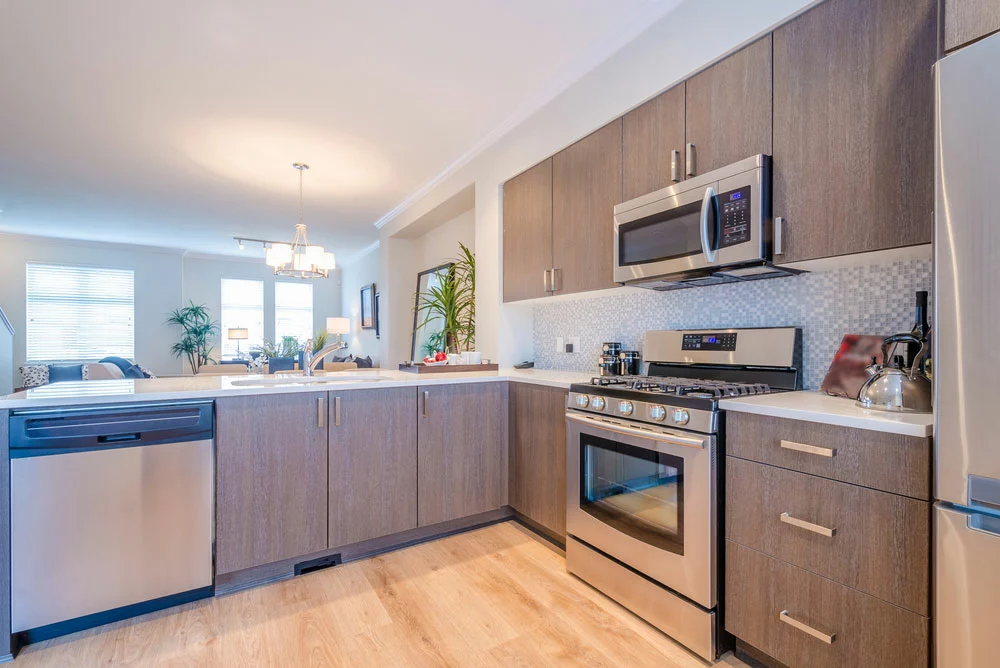
Different electrical appliances in modern kitchens
The devices draw a lot of energy, leaving the light fixture with an inadequate power source. The solution to this issue is to turn off some of the appliances or place the LED fixture in a separate circuit.
Humming/Buzzing Noise
Quality LEDs should not produce an audible humming or buzzing sound. If they do, it could be due to several electrical issues.
What Causes Humming?
A circuit overload can cause buzzing. For instance, if the installed dimmer type supports 200W LEDs, but you connect over 200W LED fixtures, they will buzz. Also, if the LED bulb receives a slightly higher voltage, it will hum instead of blowing.
Why?
The electronic components inside the bulb will vibrate at a specific frequency, causing the humming sound.
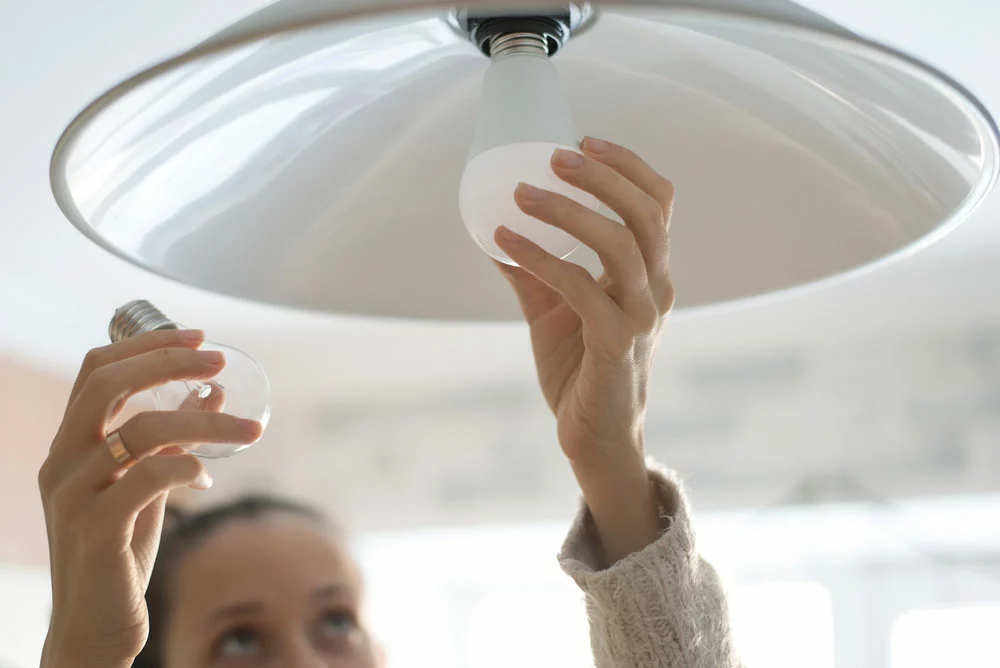
LED bulb installation in a lamp
Low-quality LED bulbs can buzz due to their poor internal components. Therefore, the solution is to get quality bulbs or a compatible dimmer for your dimmable LED bulbs.
LED Light Disturbingly Bright
LEDs are generally brighter than traditional bulbs for the same wattage. However, if they are too bright and wash out everything, it can be uncomfortable to stay under them.
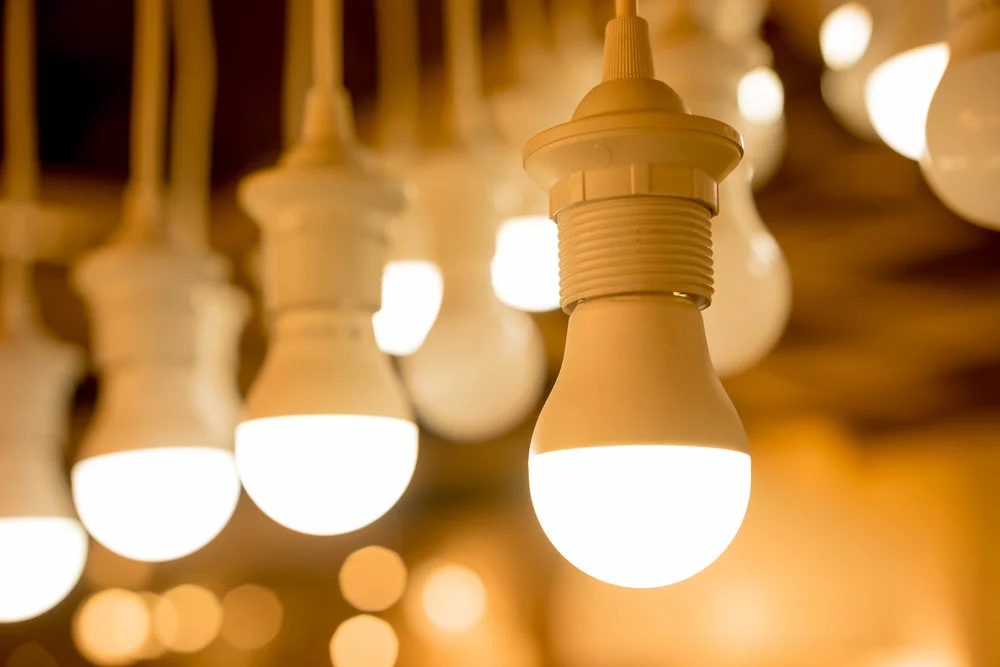
Bright LED bulbs
What Causes The Intense Brightness?
The light bulb could be getting a higher wattage than required. Also, it could have a high lumen output, or the color temperature could be too white for your liking.
You can install dimmer switches to tone down the light output. But if you don’t have dimmable bulbs, you will have to replace them with low-lumen output bulbs.
Too Dim
Although LED products are durable, they have a lifespan. And as they age, the diodes and electronics inside degrade, producing less than 100% brightness. For instance, if an LED bulb has a 50,000-hour lifespan rating at L70, its lumen output will drop to 70% after 50,000 hours of use. This common issue requires a simple bulb replacement.
However, there could be other reasons.
For instance, a loose connection can fail to turn on some chips in an LED strip light. Also, an incorrect voltage or current from the driver can cause dimming if the power supply is insufficient. Therefore, you should get a matching driver for the light strip’s voltage and current.
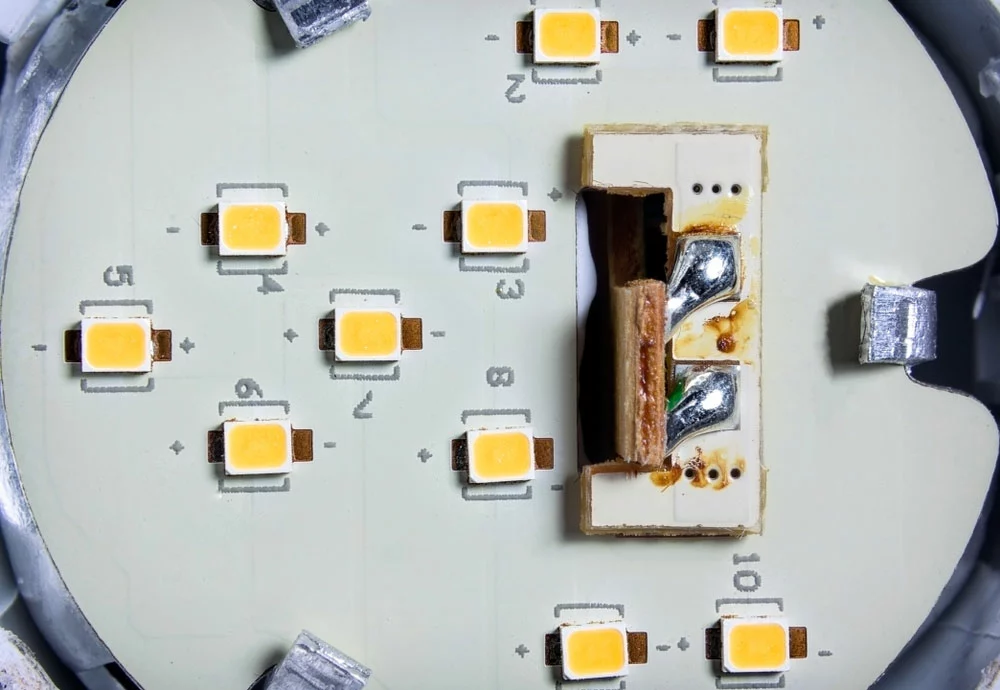
LED chips soldered on a circuit board in an LED light bulb
Lastly, high ambient temperature can lower an LED’s light output. LEDs produce maximum brightness when their junction temperature is 25°C. High ambient temperatures elevate the internal temperature, reducing the light output.
Overheating LEDs
LEDs don’t produce excessive heat. But they need efficient cooling mechanisms to function optimally. Placing LEDs in old fixtures designed for recessed lights can cause overheating because of the closed space that does not allow air circulation. The solution is upgrading to an IC-rated recessed light because it has better air circulation.
LEDs Stop Working
LEDs stop working if they:
- Outlive their lifespan
- Have a short circuit
- Experience heat build-up that damages internal components
- Have cheap internal components
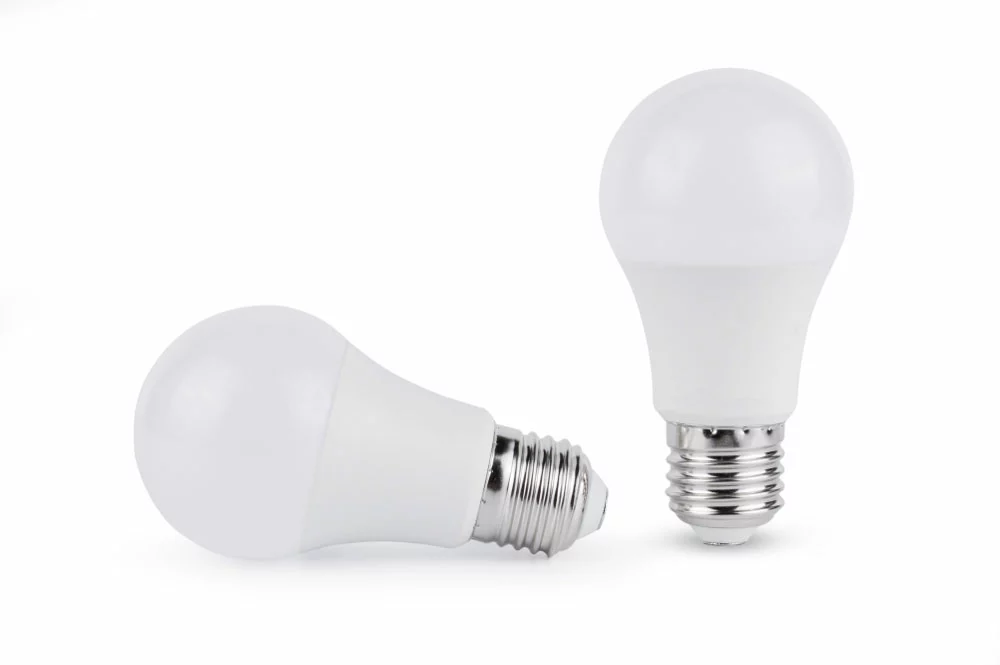
Two LED light bulbs
It is possible to repair some of these issues, but the best solution is to get a replacement.
Malfunctioning LED Dimming Issues
Non-dimming is not a bad sign. It could be the LED is not dimmable, the lighting fixture is incompatible with a dimmable bulb, or the dimmable switch has an issue. If the bulb is not dimmable, get a dimming one. For the other problems, you might have to get an electrician to check the fixture or the dimmer switch to fix the problem.
Common Problems With LED Lighting: Flashing Then Goes Off
The most typical culprit is a faulty driver. If it supplies more voltage to the LEDs than required, they will flash, then go off.
Also, connecting the driver to a higher input voltage can cause flashing. For instance, Connecting a driver meant for 110V to 220V AC line voltage will cause it to overheat and turn off after running for a short time.
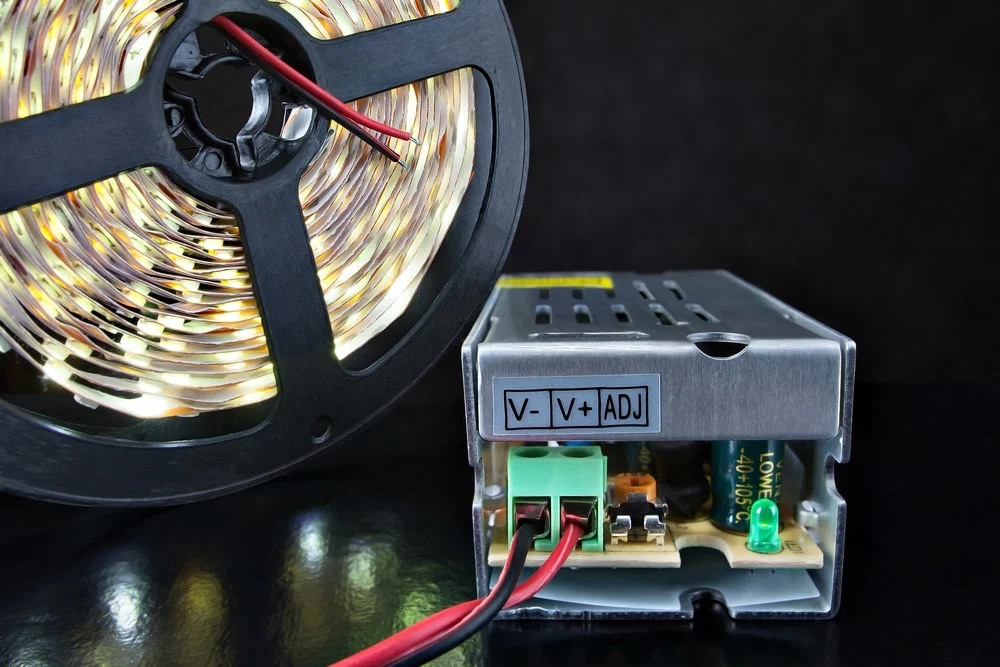
An LED driver connected to an LED strip light on a reel
The solution?
Get a driver compatible with your LEDs and the power source.
Common Problems With LED Lighting: Light Strip Showing The Wrong Color
RGB LED strips should glow in different colors. But if you notice something wrong with the color output, the culprit is usually a fault in the wire connection or handheld LED controller. Check for loose or faulty wires, or reset the controller to fix the issue.
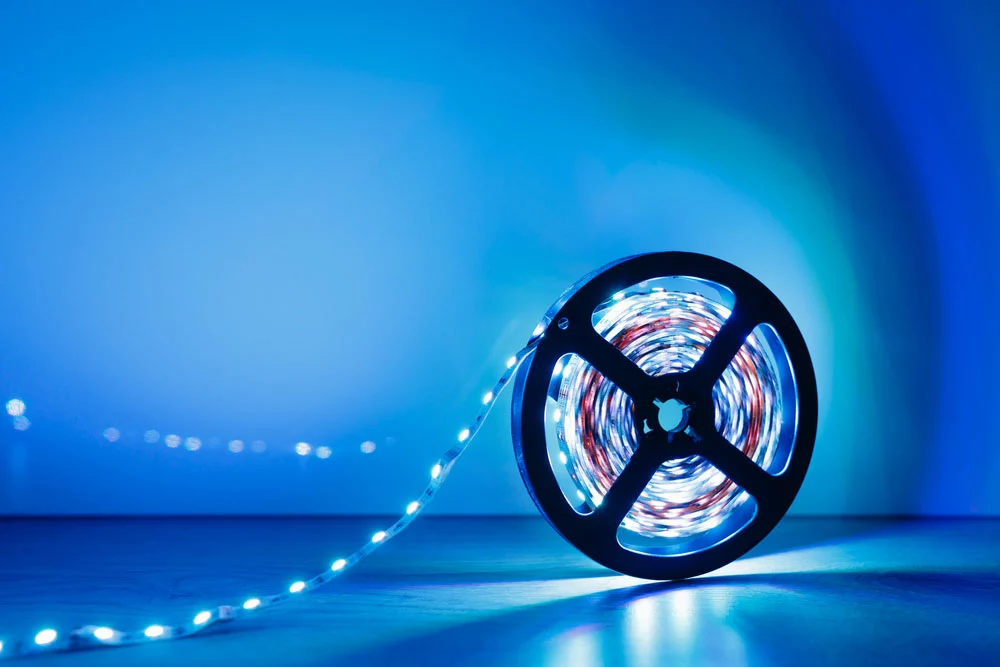
An LED strip light
Common Problems With LED Lighting: LEDs Attract Bugs
Bugs and insects get attracted to specific light wavelengths, usually UV. LED light sources don’t usually attract these bugs, but they can if the color spectrum falls on their radar.
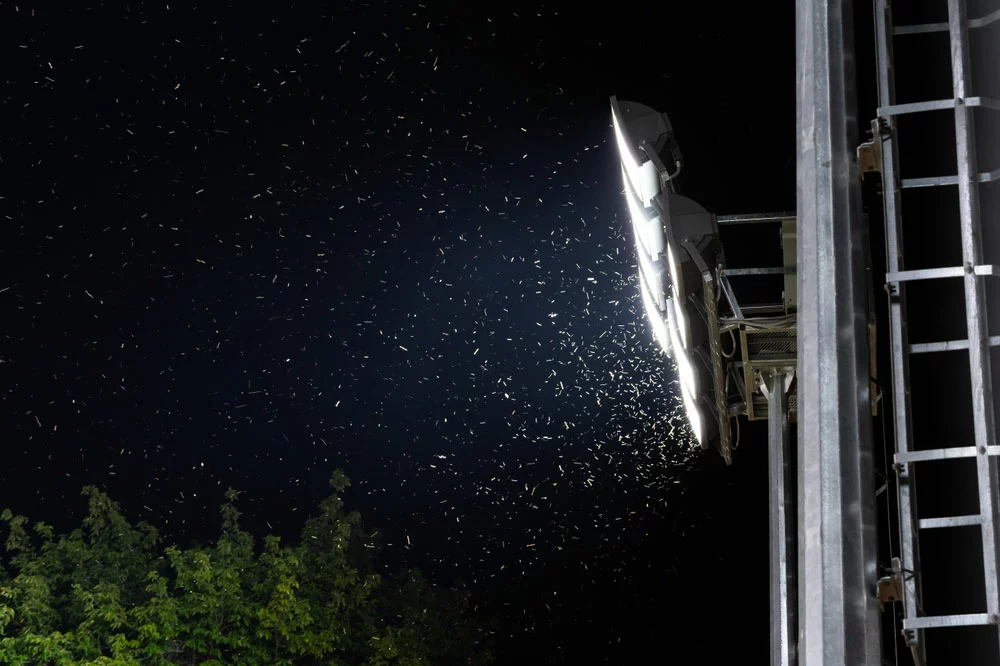
Bugs and moths around a stadium floodlight
Avoid Kelvin ratings below 2000K and above 5500K. The harsh blues above 5500K attract more insects because they are closer to UV light, so avoid these light wavelengths.
LED Burning Out
LED lights have long lifespans. So if it burns the same day you bought it, it is a low-quality light. Avoid buying cheap LED bulbs from dollar discount stores, swap meets, or flea markets. Instead, purchase branded, high-quality LED lights from reputable brands and ensure they have a warranty. They might be costly but will serve you for a long time and give you value for money.
Blue Light Pollution
Although blue light can improve alertness and reaction times, the light does not create a cozy environment for relaxing or resting. Blue light suppresses melanin production in the body, which affects our sleep quality and cycle. On top of that, prolonged exposure to blue light can damage the retina.
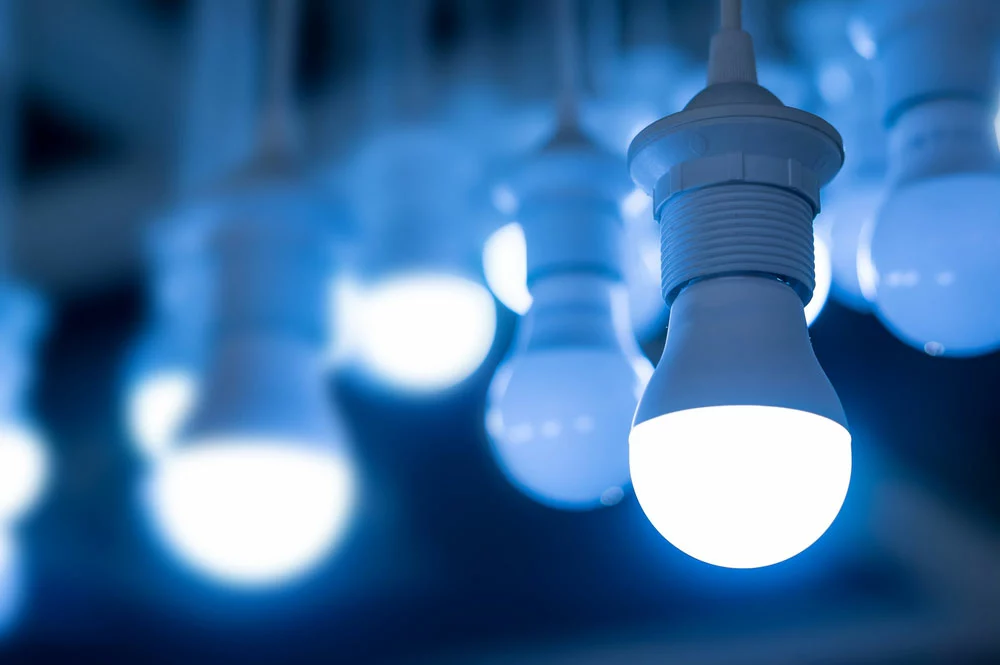
Blue light LEDs
LEDs can only emit blue light if you buy units with a high color temperature. Therefore, the solution is to switch to bulbs producing a warmer spectrum or color temperature, such as 3500K to 5000K.
Wrong Beam Angle
One critical factor to consider when buying spotlights or floodlights is the beam angle. These are application-specific lights, so you need the beam angle right. Otherwise, they won’t illuminate the area or object as required. The solution will be to get a replacement.

An illustration of a light’s beam angle
But it is worth noting that some fixtures contain reflectors to help focus or spill the light. LEDs emit light from a 180° path, but the reflector mirrors control the light direction.
Common Problems With LED Lighting: Low CRI
Color Rendering Index (CRI) shows a light source’s ability to reveal the true color of objects. The higher the CRI, the more the colors appear natural and realistic.
Incandescent bulbs make objects have a warm orange color, while fluorescent lights make them appear green. You can use the 0-100 CRI scale to balance the true color issue. And make sure it is about 80. Higher amounts above 90 might make colors seem oversaturated.
However, this issue is about personal preference. Maybe your eyes find oversaturated colors more natural. But whichever the case, ensure you keep the CRI high.
Recessed Lights Turn Off Randomly or After A Short While
Recessed lights have been around in homes a lot longer than LEDs. If you replace the bulb inside a recessed light with an LED to conserve energy, there is a high possibility of the bulb turning off after a few seconds.
Why?
LEDs don’t operate well in hot environments. Poor ventilation will cause quick heat build-up inside the recessed hole, causing the bulb to turn off. This issue can present a fire hazard if the sunk section contains wood or other composite materials.
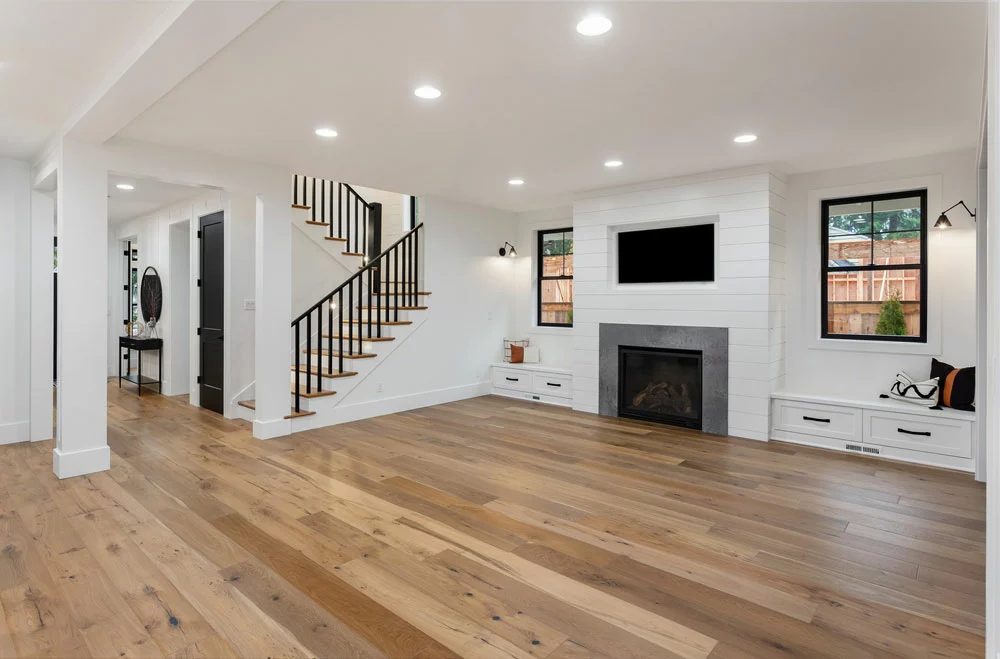
Recessed lights in the ceiling
The solution is to ventilate the area using a fan and hidden air vents.
Overheating also causes the LEDs to turn off randomly. Besides adding a fan and air vents, you can replace the old recessed light fixtures with new ones containing efficient built-in heat sink designs. These should evacuate the excess heat faster.
Wrap Up
In conclusion, several factors affect LED lighting performance, and these factors can cause issues when you install and use LEDs. That’s it for this article. If you think we left something out or want to share your sentiments, drop a comment, and we’ll get back to you asap.
